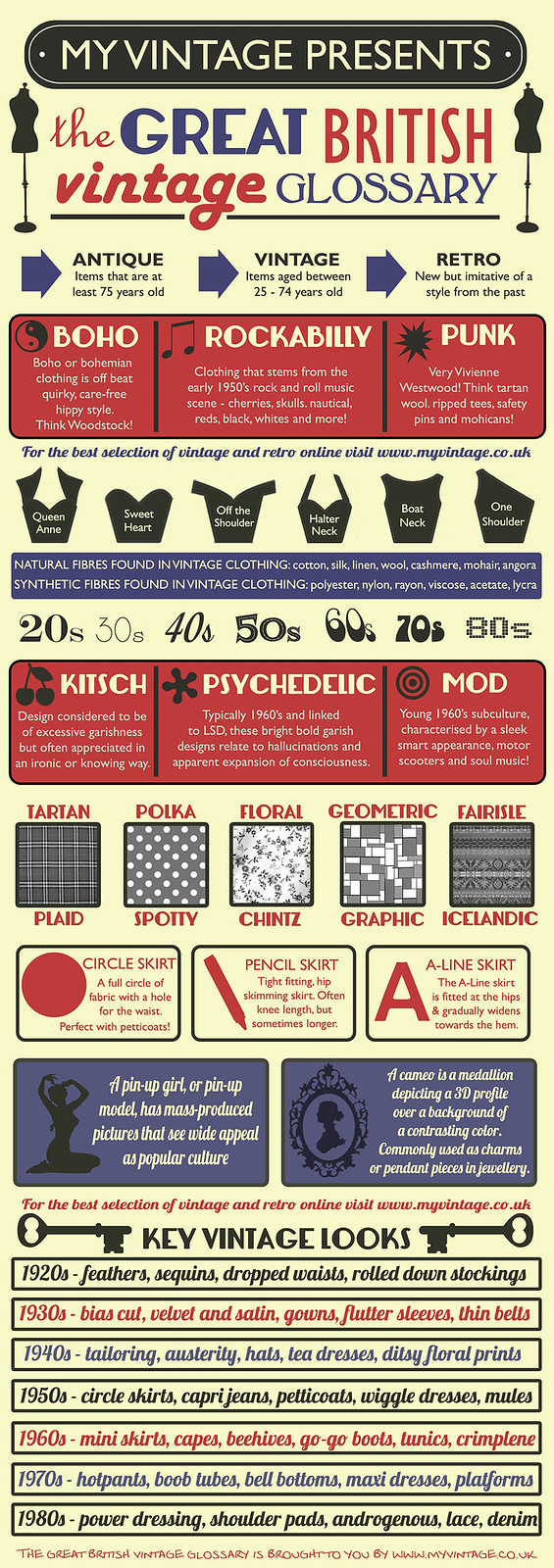Vintage Clothing Store CDMX - Chidx Clothing
Visit our physical store in Mexico City
C. Dr. Lucio 103-Local 7, Doctores, Cuauhtémoc, 06720 Mexico City, CDMX.

|
 |
 |
Infographic source: Lolitamoda
The term 'vintage' is used to describe clothing that is between 20 and 100 years old, although some limit the time to between 25 and 75 years. Keep reading and learn more.
What is vintage clothing like?
There is a general doubt about what is really considered vintage clothing . As we already mentioned, this must have a certain age, and it is not only the clothes but also the accessories. The general agreement is that it is clothing from the 1920s to 20 years ago (circa 1998).
In recent years there has been a rage for vintage clothing, more and more people are interested in this type of clothing. It is important to note that this trend is not the same as the new clothes that are inspired by these decades.
Recently, many have also begun to consider that vintage clothing is one that is 10 years old if they are designer pieces. The latter because several famous and influential designers have passed away. So the clothes they created, even if they are more recent, are considered to be vintage.
The vintage clothing concept many times it is confused with old clothes. But, this is the one that is over 100 years old. For its part, retro clothing is new, but with a style that evokes the past.
The classic style is considered the opposite of vintage, because it means that the pieces remain in style, that they have style regardless of the passage of time. That is, they do not reflect an era, but rather transcend time. For example, the black dress, the trench coats, pumps, white shirts or blazers.
In general, the definition of vintage clothing is very broad. With the passing of each decade, new pieces are included within the vintage style and clothing that at one time was vintage is now classified as antique.
For example, a black dress from the 80s it is classic, it is not vintage, even if it is from decades ago. But, a broad-shouldered blazer from that era is.
vintage fashion history
Since the beginning of the First World War the idea of vintage clothing or reusing clothing began to take life. In times of war, economic difficulties are common, therefore, the pieces are amended, arranged and repaired. They are also passed from one generation to another in a family.
Then, at the end of the 20th century, there was an increase in the demand for branded clothing. But, at the end of the 80s in the United States, vintage clothing returned, because it sought to reduce the use of brand clothing.
From there, little by little vintage clothing went from being a subculture to being part of the mainstream or mass culture. Reasons for its use include the idea of sustainable fashion and care for the environment.
vintage clothing characteristics
We are talking about vintage clothing, not about a style of dressing. Your style may be to wear vintage, but vintage clothing is from a different era than today. Modern brands incorporate the term vintage into their clothing, this can be confusing for many first-time shoppers.
The thing to remember is that a true vintage item will not say vintage on the label.
Vintage clothing can be haute couture, as we already said, but it can also be from popular brands. It can also be used or new that has been in storage, handmade or manufactured.
Vintage clothing also has to do with the fashion and responsible consumption . It is a way to slow down in a fast-paced world, because reusing clothes means less production of new clothes.
Most of the vintage clothing was previously worn. But a small percentage of pieces were never used, because they were stored. The latter have more value, especially if they have their original labels. Some refer to these as new old stock (NOS).
Clothing in this style can be commercially produced or handmade.
- You find natural fibers in vintage clothing, such as cotton, linen, wool, cashmere, mohair, and angora.
- There are also synthetic fibers such as polyester, nylon, lycra, acetate, among others.
- Today it is considered clothing from the late '90s to around the '40s and '20s.
- The most used patterns are plaid, polka dots, floral and geometric.
Vintage fashion for decades
As we already said, it is estimated that the clothes of this style is inspired by the decades from 1920 to 1990. Therefore, we will mention some of the most outstanding styles of each decade:
- 1920s: statement dresses, Mary Jane heels, t-straps, feathers, sequins, drop-waisted dresses.
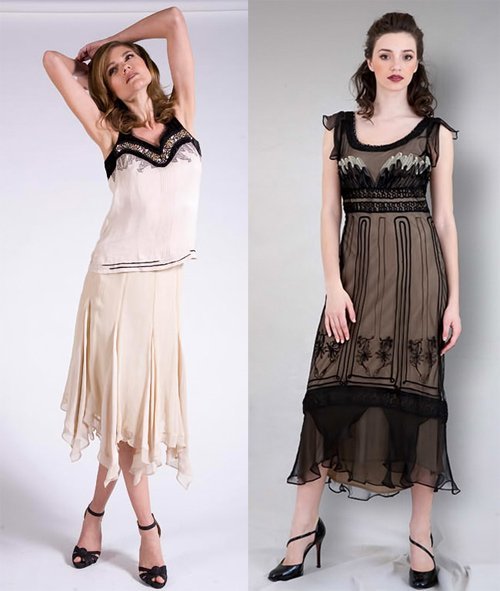
- 1930: bolero jackets, puffed and swinging sleeves. Oxfords, open heels, peep-toes. Pieces with undercuts. Fabrics like velvet and satin. Accessories like fedora hats and thin belts.
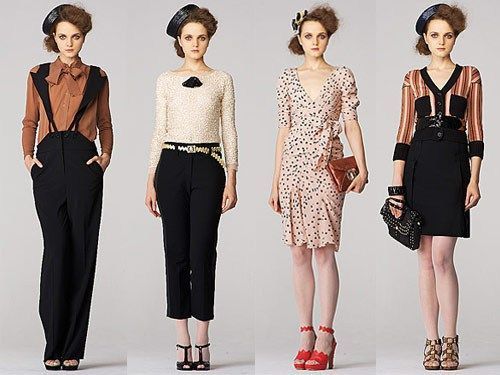
- 1940s: tweed and wool plaid skirts, reptile skin bags and shoes, platform shoes, brooches, hats, tea dresses, ditsy floral prints. In general, much use of tailoring and a lot of austerity.
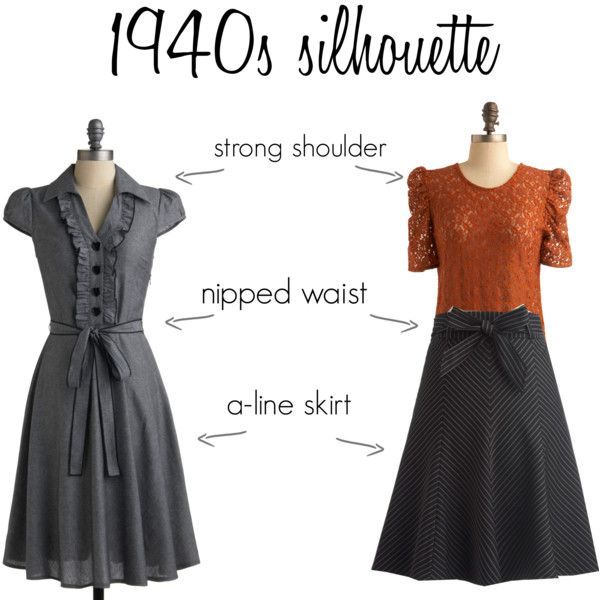
- 1950: Circle skirts and petticoats, shirt dresses, fur trims, sweater ensembles, pearl necklaces, Wayfarer sunglasses, Capri jeans, mules.
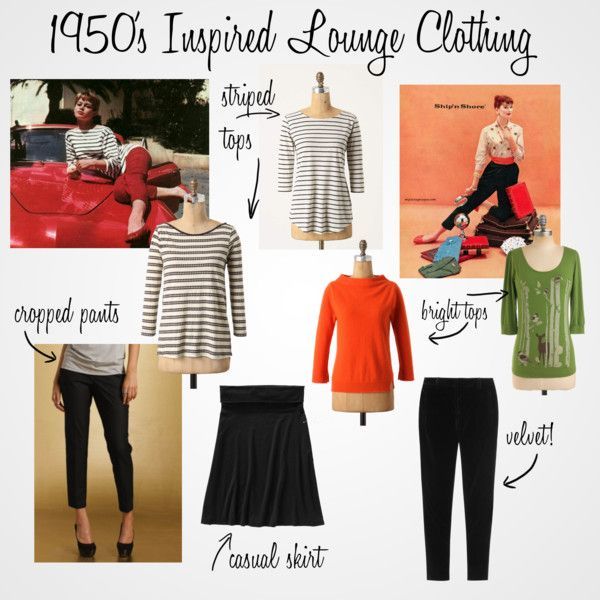
- 1960: At the beginning of this decade the most popular thing was to evoke the Jackie Kennedy style, that is, suit jackets and pillbox hats. While at the end of the sixties the hippie / bohemian style was used more, with flared jeans, with layers, go-go style and tunics.
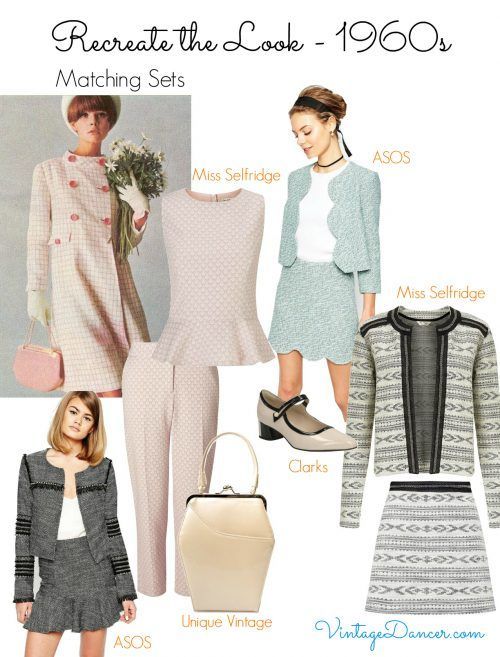
- 1970s: platforms, Birkin bags, jeans flared, boho-chic, over-the-knee boots, high heels, khaki fabric, shorts, and maxi dresses.
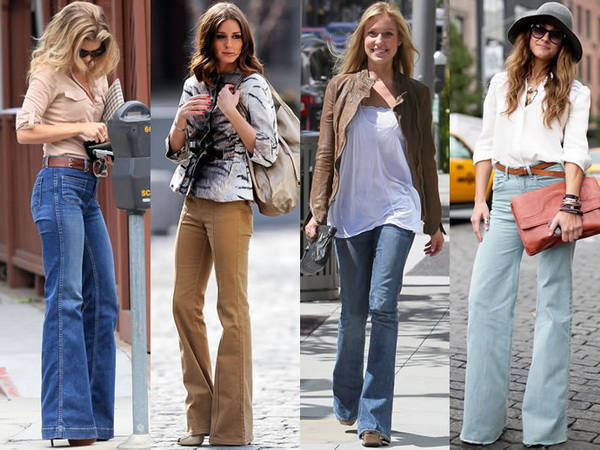
- 1980: golf shirts, gold chains, blazers and sweaters with big shoulder pads, stilettos. Androgynous and denim fashion.
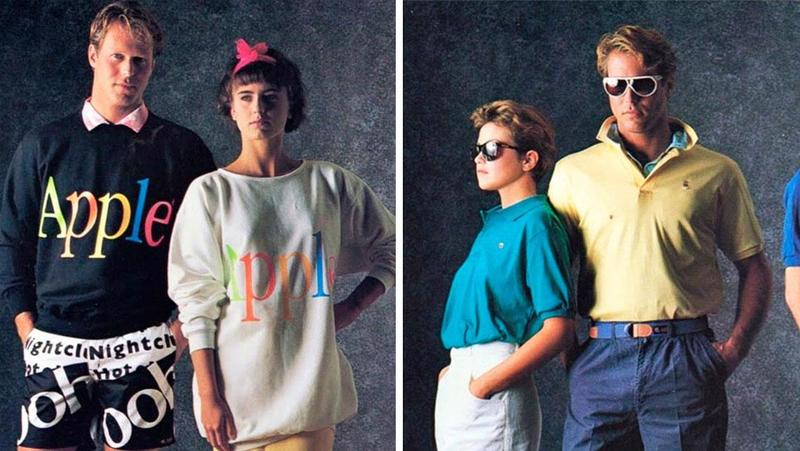
- 1990: baggy flannel shirts, leggings, oversized sweaters and chokers.
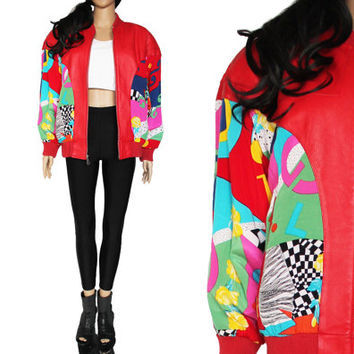
Reasons to buy and dress in that style
As you may realize, vintage clothing is often confused with other types of pieces, take into account the quality, the uniqueness, the stories behind them and more.
The vintage clothing quality it is said to be unmatched. It doesn't compare to today's clothing, unless it's very expensive, high fashion. This is because the clothing and fabrics are different. For example, before the 70s, and even the 60s, clothes were made to last longer. Also, polyester was not used as much.
At that time, quality was taken into account more than quantity. For both financial and cultural reasons. So it is not that difficult to find luxury details in vintage clothing pieces.
By wearing vintage clothes you will be able to notice the quality, the luxury finishes and you will not necessarily have to pay a very expensive price.
When you invest in this type of clothing, you can be sure that you will not enter an event or party and there will be another person with the same piece. Consequently, the vintage clothing is unique . In addition, the garments have paints, prints and buttons that are not available anywhere today.
It is not the same to have a piece of clothing that everyone can buy, than to wear something that nobody else in the world has, or that is very rare. Vintage fans become real second-hand clothing treasure hunters.
If you like buy vintage clothes You've probably wandered through thrift markets, garage sales, and vintage stores, so you've delighted in hearing stories from previous owners. Even when you don't have information about a piece, you can start to imagine and create one yourself.
How to buy vintage clothing online
If you want to buy vintage clothing you can search in specialized stores. You can find good pieces in thrift stores, but in many cases it is just old clothes, without a defined style.
In vintage clothing stores you will find collection pieces, apart from that you can talk with the owner about the clothes. Which is related to what we just mentioned about the stories that the pieces you buy tell.
If you like pieces from different eras, don't limit yourself. But, the best thing is that you focus on the accessories, that you can combine them with contemporary clothes, so you will have a vintage touch, instead of joining many styles.
On size in vintage clothing , take into account that these have changed a lot in recent years. One rule of thumb is that a piece from the 1950s or 1960s is generally larger than current pieces of the same size.
Some say that it is almost half, that is, a size 12 from those times is a 6 today. For example, a size M from the 70s is similar to an XS from 2010. You also have to consider that before the 80s obesity was not common, therefore it is difficult to find clothes in plus sizes.
But, as you get closer to today, the sizes are consistent with those of today. This more or less from the eighties. Also, consider that there is always the option of adjusting clothes with a sewing kit.
We told you what vintage clothing is like and the reasons to buy and dress in that style. Do you dare to try this fashion trend? What decade do you think was the best in terms of clothing and style? tell us.

